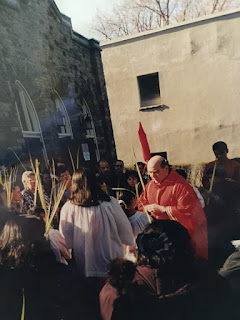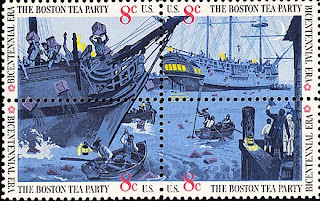Pre-pandemic, Palm Sunday was one of the most popular days of the Christian year in terms of church attendance, and normally no pastor would ever want to be caught with an insufficient supply of palms to satisfy the earnest demand of the eager crowds. When I was a pastor, there was always that annual moment of worry whether the palms had arrived – and if there were enough of them. (They always did, and there were always enough!)
Even before the pandemic, however, a novel and rather disturbing trend had begun to appear, as some people left their palms in the church at the end of Mass instead of taking them home (a consequence, perhaps, of insufficient catechetical formation on sacramentals and on the apotropaic function of blessed palms). Another contemporary challenge to Palm Sunday’s fullest celebration may come from an increasing tendency for people to arrive late for Mass. When many participants arrive during or even after the procession is over, what is the point of the procession? (In retrospect, the post-conciliar liturgy’s relocation of the Blessing and Distribution of Ashes from the beginning of Mass to the middle, while liturgically illogical, has proved to be a great and wise pastoral success!)
Palm Sunday is certainly about more than getting palms, but the palms have given the day its typical title at least since Saint Isidore in 7th-century Spain and Saint Bede in 8th-century England. One of the multiple misfortunes of the Pauline liturgical reform of Holy Week was renaming this Sunday, Passion Sunday (formerly the name of the previous Sunday). That renaming has not caught on – a very visible instance of liturgical non-reception. In any case, whatever the day’s name, my personally favorite feature of Palm Sunday has always been singing the hymn Gloria Laus et Honor during the procession (its original 39 verses composed by Bishop Theodulph of Orleans in 818). It is a fantastically glorious hymn, well worth waiting once a year for.
In contrast to the exuberance of the procession, however, the Roman Rite historically has long emphasized the memory of Christ’s Passion and Death during the Mass, the centerpiece of which was traditionally the proclamation of the Passion According to Saint Matthew. (In the contemporary liturgy, instead of reading each of the four Passion accounts on a different day of Holy Week each year, the three synoptic Passion accounts are rotated on Palm Sunday. So, this year, the Passion reading will be from the Gospel according to Mark.)
In the traditional sung liturgy, the Passion reading acquired additional drama from its proclamation by three deacons, singing in three different tones – Christ’s voice low and slow, the Narrator medium, and the third voice high and fast. (Originally, each of the deacons was also distinguished by the color of his stola latior – black for the deacon singing the words of Christ, white for the narrator, and red for the third voice.) Charlemagne’s 9th-century successor, Louis the Pious, popularized the practice of kneeling briefly at the words emisit spiritum (« He gave up his spirit »), a popular practice which has somehow survived late-20th-century liturgical informality and ritual iconoclasm.
Ritual, by its nature, is inherently somewhat dramatic. . The great ceremonies of Holy Week are even extravagantly so They are intensely dramatic, emotionally affecting, over-the-top. They are extravagant in the best sense of the word. Not unlike Mary with her expensive perfumed oil (of which we will hear in the liturgy tomorrow), the Church practices a sort of holy excess in her worship this week. In this case, however, it is we who are the beneficiaries.
Outside of communities of Religious men and women and those commendable individuals and occasional congregations characterized by liturgical enthusiasm, most people’s experience of Holy Week (apart from Easter Sunday itself) starts and ends on Palm Sunday. So it falls to today’s celebration to tell the Holy Week story in an attractive and memorable way. That highlights its importance, for there is nothing more inspiring and undying than the Church’s annual celebration of our basic story.
In his 2011 meditation on Palm Sunday, Pope Benedict XVI wrote: « The Church greets the Lord in the Holy Eucharist as the one who is coming now, the one who has entered into her midst. At the same time, she greets him as the one who continues to come, the one who leads us towards his coming. As pilgrims, we go up to him; he comes to us and takes us up with him in his ‘ascent’ to the Cross and Resurrection, to the definitive Jerusalem that is already growing in the midst of this world in the communion that unites us with his body. »
Photo: A much younger version of me blessing palms in Toronto, ON, in the late-1990s.




